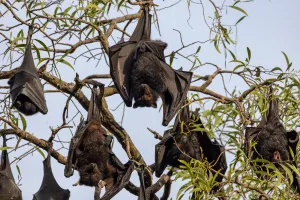Wildlife ecologist Peggy Eby fell in love with flying foxes when she moved to Australia from Kansas. She spent decades studying the bats’ movement and behavior. At times she worked without pay to answer questions she had about the fuzzy, fox-faced mammals.
Those bats turned out to be the carriers of the deadly Hendra virus, which can jump from bats to horses and then to humans. Eby began a quest to understand why and how the virus was making these leaps between species, known as spillover. She hoped to predict when the next infection would emerge. The decades of data Eby gathered as she followed her curiosity were key to cracking the mystery. So ProPublica decided to make a video about her.
Eby and her colleagues’ work shows that it’s possible to predict when spillover will happen. Doing so requires long-term research and funding to match. But ProPublica has found that public health authorities focus on responding to outbreaks already underway rather than trying to prevent them. Grants for developing treatments are easier to come by than for studies on spillover.
Eby says she hopes their findings will inspire more research into understanding what’s sparking outbreaks of other diseases like Ebola or Hendra’s equally deadly cousin, the Nipah virus: “Our response to COVID has made it pretty clear that vaccines aren’t going to be the answer, that while they are very important, while containment is very important, having a better idea of what’s causing the spillover in the first place can play an important role in preventing pandemics.”












